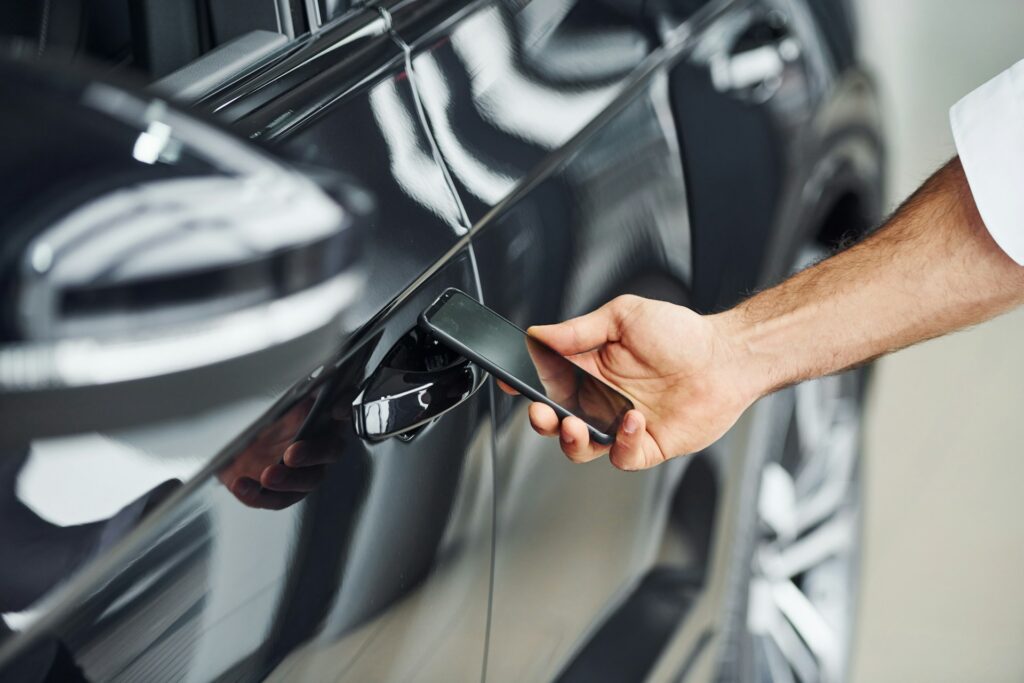The Rise of Keyless Car Theft and How to Prevent It
Keyless car crime has surged in recent years and now accounts for nearly two-thirds of all vehicle thefts, according to the Crime Survey for England and Wales (CSEW).
Keyless entry systems have become increasingly popular in modern cars thanks to their convenience. This technology allows car owners to unlock or lock their vehicle without inserting a key or pressing a button. Instead, it uses radio signals to communicate between the fob and the car sensors. When you approach, the car unlocks automatically, and when you leave, it locks again. Once inside, the fob’s signal also enables you to start the car without a traditional key.
Although this is an attractive and practical feature, it has also created more security risks. Criminals are exploiting the technology to steal vehicles quickly and quietly. As keyless systems are now standard on many cars, it is important to understand how these thefts occur and how to protect yourself.
What is Keyless Car Theft?
Keyless car theft, often called ‘relay theft’, targets vehicles with electronic fobs. Thieves use a relay device to intercept and amplify the signal from the fob, even if it is inside your home.
Typically, one criminal stands near the property to capture the signal while an accomplice waits by the car. The device tricks the vehicle into thinking the fob is nearby, allowing it to unlock and start without raising alarms.
This method is often carried out at night, when cars are left unattended on driveways or streets. The Master Locksmiths Association (MLA) notes that a keyless car can be stolen in as little as 20 to 30 seconds, often without setting off alarms. Owners may only discover the theft when they next attempt to use their car.
Why is Keyless Theft on the Rise?
Keyless entry systems are now standard in many vehicles, offering not only convenience but also added features such as auto-folding mirrors, personalised driver profiles, and smartphone integration. While these upgrades are appealing, they have made cars more vulnerable.
The equipment used to carry out relay theft is easily available online, giving criminals low-cost access to the tools they need. Because the car can be unlocked and driven away without forced entry, stolen vehicles are easier to resell or dismantle for parts.
According to experts at RTA Law, who analysed data from the Office for National Statistics, between April 2023 and March 2024, 58% of vehicle thefts involved offenders using technology to intercept or manipulate the signal from remote locking devices. This is a fourfold increase compared to 2018–2019, when just 13% of thefts were carried out in this way (Driving Instructors Association, 2025).
What are the Risks to Car Owners?
There are lots of risks to car owners with keyless fobs, as they are vulnerable to relay theft. These risks include:
- The loss of a vehicle and any personal belongings inside.
- A higher insurance premium after theft claims.
- Stress and pressure, especially for households relying on one car.
- The risk of thieves returning if no security improvements are made.
How to Protect Against Keyless Car Theft
It is not all negative news. There are plenty of ways to enjoy the convenience of a keyless vehicle while also reducing the risks.
Signal-blocking pouches or boxes
Signal-blocking pouches are also known as ‘Faraday bags’ and are a simple and nifty way to block the fob’s signal. Once the fob is inserted inside the pouch, it works to reflect the electromagnetic signals with its layers of conductive fabric, which prevents the radio-frequency signals from being intercepted.
Turn off keyless entry
Some car manufacturers allow you to disable keyless entry when not in use. This option varies by model but is worth checking in your vehicle settings.
Keep keys away from doors/windows
Storing your fob further inside the house makes it more difficult for criminals to capture the signal.
Install CCTV and lighting
Motion-sensor lights and visible cameras act as strong deterrents. The possibility of being recorded is often enough to discourage thieves and an automated sensor light can spook attackers, making them think they’ve been caught.
Use a physical deterrent
Simple devices like steering wheel locks or wheel clamps provide an additional barrier that most thieves will struggle to overcome.
Install driveway bollards
Perhaps the most effective physical deterrent, bollards act as a clear and immovable barrier to prevent a vehicle from being driven away. Even if thieves bypass your car’s electronic system, they cannot remove it from your driveway without lowering the bollard.
At Rhino Security, we provide telescopic steel bollards that are discreet, easy to use, and highly effective. With a choice of colours and finishes, they can also be matched to the look of your property, combining security with style.
Why Physical Barriers Are Still the Best Defence
Electronic solutions such as key pouches and alarms are valuable, but they can be bypassed. Physical barriers remain the most reliable way to stop thieves in their tracks.
A well-placed bollard offers unbeatable peace of mind, particularly if you own a high-value or keyless-entry car such as a BMW, Audi, or Range Rover, models that are frequently targeted by criminals. By combining bollards with other layered defences, you create a much stronger level of protection for your vehicle and property.
The rise of keyless car theft highlights the importance of taking proactive steps to protect your vehicle. By understanding how these crimes are carried out and by investing in both electronic and physical security measures, car owners can significantly reduce their risk.
While keyless entry offers convenience, it should not come at the expense of peace of mind. Adding a physical barrier such as a telescopic bollard, provides a level of security that electronic systems alone cannot achieve.
If you want to secure your vehicle with proven physical protection, get in touch with Rhino Security today on 01603 484999 to explore our range of residential bollards and installation services.

